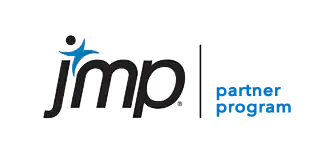Pharmaceuticals

Overview
The pharmaceutical and biopharmaceutical industries have unique challenges. The application of suitable statistic techniques is not only a key component of the pharmaceutical quality system, it is mandated by regulations and suggested by guidance documents.
Expertise
Quality by Design (QbD): As stated in Q8, the International Conference on Harmonization (ICH) guidance document on pharmaceutical development, drug product should meet its intended product performance as well as meet the needs of patients. Although the strategy for pharmaceutical development may vary from company-to-company and/or from product-to-product, a systematic approach defined by QbD principles is required.
Stability Analysis: Stability studies focus on how drug substance/product behaves over time. Although each stability study may have a different purpose (including determine expiries, determine optimal storage conditions, or validate a process change), there is a need to evaluate stability data using justifiable statistical methods.
Pharmaceutical Development/Formulation Studies: Design of experiments (DOE) in process development and characterization for pre-clinical, clinical, and commercial products efficiently determines critical process parameters and characterizes the design space for your process.
Statistical Process Control (SPC)/Process Capability: Design of statistical process control (SPC) programs and implementation of advanced monitoring and assessment analytics such as real time multivariate SPC are essential to any pharmaceutical quality system.
Process Validation: The guidance document on process validation states the goal “is to design a process suitable for routine commercial manufacturing that can consistently deliver a product that meets it quality attributes.” Two objectives of process validation are: building and capturing process knowledge and understanding, and establishing a strategy for process control. These objectives require the extensive use of DOE and SPC.
Biosimilars: The Biologics Price Competition and Innovation Act of 2009 (BPCI Act) created an abbreviated pathway for licensing of biological drug products that are shown to be ‘biosimilar’ to reference drug products already licensed by the FDA. Although this pathway to licensing provides an expedited means to bringing biosimilar drugs to market for patients, it still requires the development and submittal of knowledge about the safety and effectiveness of the drug. Statistical methods are the foundation to a successful biosimilar program.
Risk Management: A key component to QbD is to use the information gained from pharmaceutical development studies as a basis for risk management, process validation, and a control strategy resulting in a product with the desired quality. The use of risk management tools such as cause-and-effect diagrams and failure modes and effects analysis (FMEA) is essential prior to and post QbD studies.
Text Mining/Analytics: The majority of stored data in drug development/manufacturing is not numerical; it is in the form of unstructured text in reports and documents. The use of text mining/analytics in the pharmaceutical industry is emerging for analyzing product complaints, non-conformances, recall information, and inspection observations.
Statistical Support for CMOs: Due to the rising costs of manufacturing drug therapies, many companies are relying on contract manufacturing organizations (CMOs). CMOs have the same needs for applied statistics (e.g. pharmaceutical development, formulation, risk management, process transfer) as other drug manufacturers.
Analytical Methods: Process development, validation, manufacturing, and quality rely on having accurate and precise measurement systems. Thorough use of statistical methods and sound experimental design is essential to support assay development, robustness, validation and transfer.
Acceptance Sampling: 21 CFR directs manufacturers to establish, maintain, and document acceptance procedures for: receiving acceptance activities, in-process acceptance activities, and final acceptance activities. Each of these are direct applications of acceptance sampling.
Specifications/Acceptance Criteria: Scientifically sound application of statistical analysis modeling to develop acceptance criteria for analytical methods and process validation. In addition, 21 CFR requires both in-process and final specifications to be consistent with previously acceptable estimates of process means and standard deviations.
Impact
A medium-sized, growing biopharmaceutical company requested Quality-by-Design support for a future filing on a drug therapy. An Adsurgo consultant worked with them to create risk management tools, generate sufficient experimental designs, analyze the data for report generation, construct a process control strategy as part of a risk management plan, and develop validation acceptance criteria. This information was used in process validation and will be used in process transfer to a commercial manufacturing facility. In addition to the QbD services, the Adsurgo consultant helped the company develop acceptance criteria for characterizing the similarity of purification profiles.
The company does not have a quality engineering department. They continue to use Adsurgo Enterprise Consulting Services to augment their process engineering teams. Adsurgo…the missing piece of the puzzle.

